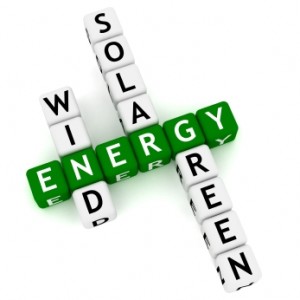I found myself sympathizing with former Gov. Schwarzenegger frustrations when I came across an article about the push to build solar energy facilities in the sun-drenched deserts of southwestern California.
 The issue that got Schwarzenegger upset was a delay in permitting solar energy facilities in the Mohave desert region due to the presence of endangered species, the Mohave ground squirrel among them. Who would have guessed that solar power, the fair-haired child of the environmental movement, actually has an environmental price tag? Yes, those acres of sleek, shiny solar panels, which emit no carbon-laden smoke or radioactive steam as they diligently turn sunlight into wattage, can actually harm their host environments. The two poles of the California debate can be summarized thusly from press coverage:
The issue that got Schwarzenegger upset was a delay in permitting solar energy facilities in the Mohave desert region due to the presence of endangered species, the Mohave ground squirrel among them. Who would have guessed that solar power, the fair-haired child of the environmental movement, actually has an environmental price tag? Yes, those acres of sleek, shiny solar panels, which emit no carbon-laden smoke or radioactive steam as they diligently turn sunlight into wattage, can actually harm their host environments. The two poles of the California debate can be summarized thusly from press coverage:
Gov. Terminator: “I’m trying to clean up the environment and wean us off coal and imported oil, and you’re talking to me about freakin’ squirrels?”
Donna Charpied (Mohave desert resident and organic farmer): “Squirrels rock. You’re not screwing up my environment to clean up your mess.”
Caricaturing aside, it’s easy to see the legitimate points on both sides. Renewable energy is a huge part of our future – but not our whole future. Biodiversity and resource consumption have to weigh in the environmental equation as we seek alternatives to fossil fuels. For instance, conventional solar plants use tons of water per hour – between 500 and 1,100 gallons per megawatt hour – for cooling. Water is not a casual topic among people who live in deserts. Diverting huge amounts of it to solar plants can seriously stress local environments.
Part of the solution to disturbing vast tracts of desert landscape is mounting solar panels on already developed urban property. The roofs of warehouses and industrial facilities are the most frequently mentioned locations, and they doubtless have a role in closing the renewables versus carbon fuels gap. But think of it. How big is a coal-fired power plant? Really big, because it takes a lot of “big” to produce a lot of electricity. We aren’t going to replace that kind of output with solar panels on roofs alone. We need utility-scale solar facilities, and like it or not that means making environmental trade-offs to make long-term gains.
Wider use of solar technologies like concentrated photovoltaic (CPV) and dry cooling can shrink a solar facility’s physical footprint and eliminate its water consumption. Technology can’t however, shrink solar facilities down to nothing, or magically pop them onto a site without disrupting local species. Energy production, renewable or otherwise, has a price. It might cost money, or water, or land, or species displacement, but it’s going to cost. Wind, solar, biomass and biofuels are a better long-term energy solution than fossil fuels, but we have to get Zen about the fact that they’re going to consume resources. Differently from fossil fuels, and at a different cost to the environment, but they’re going to consume. Solar and wind farms take up a lot of land, as do the new power lines for carrying energy to market. Wind turbine blades will inevitably kill some birds and bats.
Complex problems seldom have simple solutions, and developing a new energy economy is about as complex as it gets. As a society, if we want the benefits that renewable energy sources offer then we have to expect to pay for them, if not in CO2 emissions then maybe in squirrels and desert vistas. The trick is using all the technology tricks we have in our bag to keep the price as low as possible.